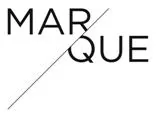The truth defence in defamation proceedings is becoming increasingly complex and difficult for journalists to make out.
Businessman Chau Chak Wing is suing the ABC and Fairfax over a 4 Corners story in 2017 which suggested that he was a spy for China and the CCP and involved in bribery. The full Federal Court has upheld a decision to strike out the ABC and Fairfax's truth defence.
The case is symptomatic of the increasing challenges for investigative journalism. Powerful plaintiffs tie up funds in legal defence and procure a broader, chilling effect across an industry which is already strapped for cash. From a practical perspective, the appeal decision highlights risks that publishers can mitigate at the pre-publication stage.
There were two aspects of the decision to strike out the truth defence. The first was a technical point about what the ABC and Fairfax had to prove to make out a truth defence. Long story short, they weren't allowed to prove only that there were reasonable grounds to believe that Mr Chau was involved in espionage and bribery. He pleaded imputations that he was guilty of those things, so that's what they had to prove. By pleading the guilt imputations, Mr Chau has raised the stakes for both sides. If he can't prove that the guilt imputation arose, he loses. If the ABC and Fairfax can't prove the truth of his guilt, the truth defence fails. It's a bold move but it gives Mr Chau a big tactical advantage which could push the ABC and Fairfax towards a settlement.
The second aspect of the strike out was the details, or particulars, on which the ABC and Fairfax based their truth defence. The trial judge and appeal court both said that the particulars, even if proven in evidence, couldn't prove the truth of the imputations. Publishers are being held to a high standard of proof on investigative pieces.
To take an example, Mr Chau pleads imputations that he was involved in a scheme to bribe the President of the General Assembly of the UN, John Ashe. The ABC and Fairfax particulars relied on a combination of sources to implicate Mr Chau.
- They pointed to details of charges in the US against a woman involved in the bribery and her guilty plea to those charges. That complaint suggests that the bribery was tied to a $200k payment to Mr Ashe to attend and speak at a conference in China in 2013.
- They refer to an unidentified co-conspirator, "CC-3". They had no direct evidence of any involvement of Mr Chau, and the US case didn't name CC-3.
- In 2018 Andrew Hastie MP alleged in a parliamentary speech that US intelligence personnel that CC-3 was Mr Chau.
The ABC and Fairfax said that from all of that, you could infer that Mr Chau was CC-3 and that he was knowingly involved in the bribery. The judges said the allegations in a foreign proceeding, the hearing and outcome of that proceeding and Andrew Hastie MP's statements were incapable of supporting such a serious allegation. There were too many gaps. Further, they amounted to hearsay. And finally, there is legislation which prevents you from relying on statements in parliament to prove the truth of, well, anything.
The upshot of the appeal decision is that, more than ever, it is critical to work on the defensibility of your story during the pre-publication stage. First, consider the strength of your evidence and whether it will stand up in court. Next, tailoring your language very clearly around the facts known and unknown can help narrow the imputations that arise and improve your chances of succeeding on a truth defence.
We do not disclaim anything about this article. We're quite proud of it really.


